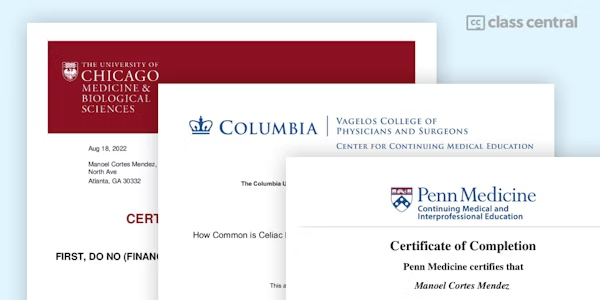Target Audience
The target audience is adult and pediatric physicians and physician's assistants, nurse practitioners, fellows, dietitians and nutritionists, researchers, and patients.
Purpose
The purpose of this series is to increase the knowledge base of participants in the pathophysiology, clinical presentation, diagnosis, and management of celiac disease to make them aware of the potential increase of morbidity and mortality and to educate about the nature of a gluten-free diet.
Educational Objectives
At the conclusion of this activity, participants will be better able to:
- Recognize the worldwide prevalence of celiac disease
- Discuss the role of the amount and timing of gluten administration as a factor in celiac disease development
- Discuss the role of environmental factors in celiac disease
Accreditation Statement
The Columbia University Vagelos College of Physicians and Surgeons is accredited by the Accreditation Council for Continuing Medical Education (ACCME) to provide continuing medical education for physicians.
Credit Designation Statements
The Columbia University Vagelos College of Physicians and Surgeons designates this enduring material for a maximum of 2.0 AMA PRA Category 1 Credits™. Physicians should claim only the credit commensurate with the extent of their participation in the activity.
The Commission on Dietetic Registration has approved this activity for 2 CPEUs.
Agenda
Changing Epidemiology of Celiac Disease Over Space and Time
Carlo Catassi, MD
Department of Pediatrics, Head, Center for Celiac Research, Universita Politecnica delle Marche, Ancona, Italy
Gluten Timing and Quantity as a Risk Factor for Celiac Disease
Benjamin Lebwohl, MD, MS
Associate Professor of Medicine and Epidemiology, Columbia University, USA
Environmental Risk Factors for Celiac Disease Apart from Gluten
Jonas Ludviggson, MD
Professor, Department of Medical Epidemiology and Biostatistics, Karolinska Institutet, Sweden
Case Presentation/Q&A
Moderator: Peter HG Green, MD
Phyllis & Ivan Seidenberg Professor of Medicine, Moderator and Course Director
Columbia University Medical Center
Disclosures
All those involved with the planning and delivery of this education will disclose all financial relationships in the past 24 months with ineligible companies. An ineligible company is any entity whose primary business is producing, marketing, selling, re-selling, or distributing healthcare products used by or on patients. For each financial relationship, disclosure will include the name of the ineligible company and the nature of the financial relationship(s).
None of the planners/faculty for this educational activity have relevant financial relationships to disclose.
Acknowledgment
Supported by an educational grant from Takeda Development Center Americas, Inc.
Technical Requirements
This activity is best experienced using the most current browser (or one back) of Firefox, Chrome, Safari, Internet Explorer, or Microsoft Edge. For all activities featuring audio, you must have a sound card and speakers. To view graphic images and references that appear in separate "pop-up" windows, you must have JavaScript and session cookies enabled on your computer. Adobe Acrobat Reader may be required for certain activities.



